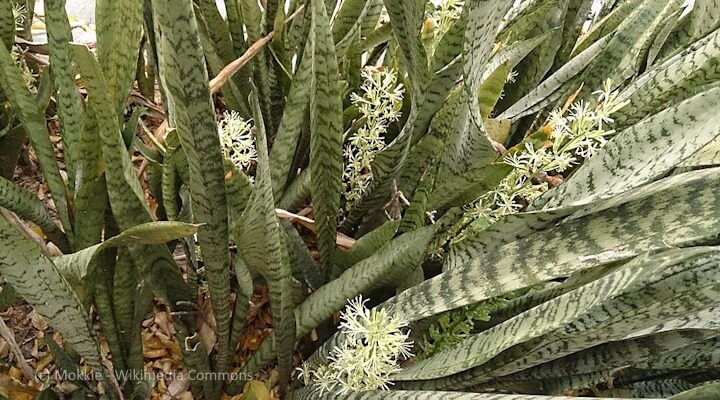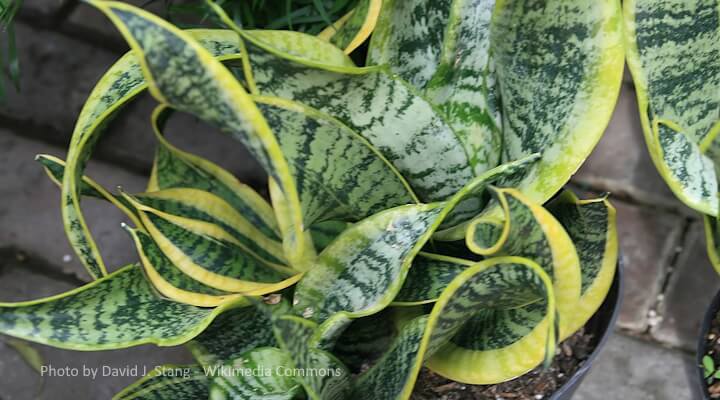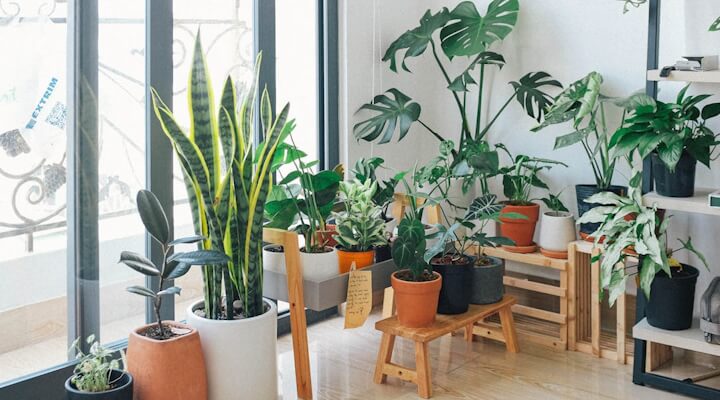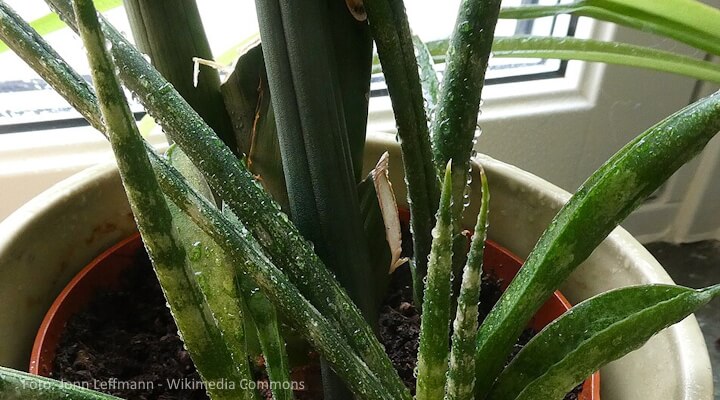
17 Underrated Snake Plant Benefits You’ll Love (And a Few You Might Not Know)

Snake plant benefits go way beyond just looking good on your windowsill. These sleek, sword-like leaves don’t just add drama to a room—they actively support cleaner air, calmer moods, and even better sleep. For busy plant lovers juggling work, wellness, and home aesthetics, the snake plant might be the quiet most valuable player (MVP) of indoor living.
But here’s the catch: most people still choose plants based on how they look, not what they do. They buy thirsty tropicals, place them in dark corners, and wonder why everything keeps dying. Sound familiar?
The problem? Most trendy plants aren’t built for real life. According to NASA research and several peer-reviewed studies, air in our homes can contain volatile organic compounds (VOCs) like formaldehyde and benzene. Add low light, dry air, and a busy schedule—and you’ve got a recipe for plant disaster and stale indoor air.
That’s where snake plants (Sansevieria trifasciata or Dracaena trifasciata) quietly shine. They tolerate neglect, thrive in low light, release oxygen at night, and subtly help improve indoor air quality. They’re low-effort, high-impact—and surprisingly underrated for how much value they bring to your space.
Read on to discover 17 snake plant benefits that’ll change how you think about this humble houseplant.
17 Real Benefits of Snake Plants That Go Beyond the Hype
Think snake plants are just trendy decor? Think again. Behind those stiff, stylish leaves is a plant that quietly does a lot—from cleaning up the air to holding it down when you forget to water (again).
Some perks are backed by science. Others? Backed by generations of plant lovers, spiritual traditions, and people like me who swear their home feels better with one in the room.
Let’s cut through the fluff and dig into what this green warrior actually brings to your space.
1. It Filters Air—But Let’s Talk Real Results
Look, the whole “air purifying” thing? It’s not a lie—but it’s not magic either. Snake plants can remove nasties like benzene and formaldehyde. NASA proved that in a sealed lab. The catch? You’d need like 90 plants in your living room to notice the difference.

Fun fact: It’s a myth that NASA proved that snake plants produce enough oxygen to sustain human life. They can, however, help filter toxins from the air.
So, is it useless? Nope. I keep one in my bathroom and my tiny office—it does make the air feel less stale. Think of it as a gentle assist for those stuffy corners, not a full-on air scrubber.
Plant people swear by it for good vibes and cleaner breath zones. Just skip the hype—and enjoy the calm.
💡 Plant Tip: Seeing leaf curl, sticky sap, or webbing? These might be early signs of pests. Check this ID guide to spot what’s wrong fast.
2. Releases Oxygen While You Sleep (Perfect for Bedrooms)
Here’s something cool: snake plants don’t just sit pretty at night—they actually breathe out oxygen while you sleep. Most plants only do this during the day, but snake plants use a special system called CAM (don’t worry, it’s simple).
CAM stands for Crassulacean Acid Metabolism—basically, it means the plant opens its “pores” at night instead of during the day. That’s when it takes in carbon dioxide and pushes out oxygen. Translation? It freshens up your bedroom air while you catch Z’s.
You won’t feel like you’re sleeping in the Alps—but in a small stuffy room? It totally makes a difference.
Snake plants look great and carry surprising benefits—but only if they’re cared for right. Learn how in my snake plant care guide.
3. Helps Maintain Humidity in Dry Apartments
Snake plants don’t just clean your air—they also add humidity. Through a process called transpiration (basically plant sweat, but in a cute way), they release tiny bits of water into the air.
In experiments, the snake plant exhibited the best transpiration rate and released the most oxygen compared to spider plants and dracaena. Not bad for a humble houseplant you rarely need to water.
If you live in a dry apartment, run the heat all winter, or wake up with tight skin and stuffy sinuses, this little plant quietly helps rebalance the vibe. It’s not a humidifier, but it’s a leafy step in the right direction.
Even resilient houseplants can show stress. If you’ve noticed twisting leaves, here’s my complete snake plant curling guide to help.
4. Boosts Mood, Focus & Mental Clarity
Having a snake plant nearby just feels good. No drama, no drooping—just strong, clean lines and a steady presence. That kind of vibe can shift your whole space, especially when your brain’s in overdrive.

One study found that “active interaction with indoor plants can reduce physiological and psychological stress.” Translation? Just having greenery around—like a steady little snake plant—can lower your blood pressure and boost your focus (Journal of Physiological Anthropology, 2015).
It’s a plant you’ll barely think about, but your nervous system definitely will.
5. Basically Impossible to Kill
Forget to water it? Leave it in a dark corner for weeks? Don’t worry—the snake plant’s still chillin’. It’s probably one of the most forgiving houseplants I’ve come across.
This is the plant that forgives you for being human. Its thick, water-storing leaves are basically little built-in survival kits. Low light? No problem. Missed a watering (or four)? Still thriving.
That’s why it’s the go-to for beginners, travel lovers, or anyone juggling more than just plant care.
It’s true: The snake plant is the houseplant that thrives on your neglect!
6. A Reputation for Blocking Bad Vibes
Some folks swear by snake plants as energy protectors. In traditional practices like Feng Shui, it’s believed that their stiff, upright leaves act like shields, cutting through negative energy and helping create a more balanced, positive space. Although there’s no scientific proof, it’s a common houseplant variety to bring energy to homes.

Most Feng Shui enthusiasts say that placing a healthy snake plant by the entryway, desk, or bedroom improves energy flow. They say it helps with mental health, sleep, and even productivity.
And honestly, the plant looks so good, you’ll feel a ton of benefits with it just being there.
Worried about pets and houseplants? Learn whether snake plants are safe around cats in our toxic plant safety guide.
7. Easy to Propagate = Built-In Gifts
Snake plants don’t just sit pretty—they multiply. Over time, they send out baby plants (called pups) that sprout up right from the soil line. With proper care and a roomy container with plenty of space, you can split them off and pot them up in no time.
It’s one of the few low-maintenance plants that keeps on giving. One plant can turn into five—whether you’re gifting a friend, swapping with other plant enthusiasts, or filling every windowsill in your home. Snake plants don’t just survive—they multiply. One plant = endless gifts.
Find out about three easy methods to propagate snake plants for your indoor garden.
8. Stylish Enough for Any Room Aesthetic
Snake plants bring that effortless style and energy. With upright leaves, vertical stripes, and compact growth habits, they slip right into almost any space. Contemporary spaces? Check. Cozy bedrooms? For sure. Indirect light? No problem. Even Bohemian spaces love a bit of stiff-leaf drama.
They’re like the capsule wardrobe of house plants—simple, versatile, and always pulled together. If you want a plant that elevates the room without demanding attention, this popular houseplant has nailed aesthetic appeal to a tee.
A healthy snake plant stands tall and firm, so if yours starts to slump, it’s worth checking this guide on why your snake plant is drooping before the problem worsens.
9. You Can Totally Grow It in a Bathroom
Not every plant loves bathroom life, but the snake plant? It doesn’t flinch. This resilient succulent handles low-light environments, weird humidity spikes, and the occasional cold draft like a champ.
You don’t need bright light or a grow light. Just stick it near a south or west-facing window (if you’ve got one), use well-draining soil, and avoid wet soil that leads to root rot. Boom—instant upgrade to your morning routine and indoor humidity levels. Cute plants in unexpected places? Big win.
10. Snake Plant Blooms: Yes, It Occasionally Flowers
Most people don’t even know this—but under the right stress (yep, stress), a snake plant can push out a flower spike. Think tall, delicate blooms that smell slightly sweet—like your plant’s mic-drop moment.

It usually happens when it’s slightly root-bound, gets plenty of indirect light, and maybe forgets a watering or two. Snake plant flowers are rare, unpredictable, and weirdly charming. Another reason this popular houseplant keeps plant enthusiasts on their toes.
11. Surprisingly Budget-Friendly Wellness Upgrade
Snake plants are one of the few house plants that tick all the boxes—at a price that doesn’t make you flinch. You can snag a healthy 8-inch plant for under $20, and it’ll still deliver benefits for plants, people, and indoor spaces alike.
From mini succulents on shelves to feet-tall floor vibes, it’s the low-maintenance plant that fits almost any budget, lifestyle, or corner craving a bit of ambiance.
12. Safe for Offices, Dorms, and Cubicles
Snake plants are the classic set it and forget it kind of houseplant. They handle weird office lighting, skipped weekends, and dry cubicle air without breaking a sweat. Perfect for shared spaces where “proper care” is more wishful thinking than routine.
Add in that upright growth, compact footprint, and chill personality, and it’s no surprise you’ll spot them on desks, shelves, and common areas. For busy students or tired office staff, this adaptable beauty is a no-brainer.

If you love low-maintenance plants with bold personalities, snake plants aren’t your only option. Hoyas, also known as wax plants, bring a completely different vibe—think trailing vines, thick leaves, and even clusters of fragrant blooms. Want to explore more? Check out my guide to the best types of hoyas or find a kind of easy tropical indoor plant for beginners to find your perfect match.
13. Pet Owners, Read This First
Snake plants are stunning—but if you’ve got pets, here’s what you should know. According to the ASPCA, snake plants are considered mildly toxic to cats and dogs. The culprit? A natural chemical called saponin, which the plant produces to defend itself from pests.
If your furry friend chews on the leaves, it could lead to minor ailments like vomiting, drooling, or an upset stomach. It’s rarely serious, but definitely not fun—for them or you.
Many pet owners still keep snake plants around. The key? Place them high up, use heavier pots (no tipping!), or choose a spot your pets tend to avoid. With a bit of awareness and placement, you can enjoy this popular houseplant and keep your four-legged family safe.
Noticed bite marks on the snake plant’s stiff leaves? They’re hardy and great for air quality, but snake plants are toxic to cats—here’s how to keep your pets safe around them. Also, discover ways to help keep cats far away from toxic snake plants.
14. Thrives in Poor Soil (But Here’s the Best Mix)
Snake plants aren’t picky, but if you want healthy snake plant leaves and serious longevity, soil matters. These plants hate wet feet. That means soggy, dense soil is a one-way ticket to root rot.

The trick? Use well-draining soil that mimics their native dry environment.
Bonus: How to Make the Perfect Snake Plant Soil Mix
- Start with 2 parts all-purpose cactus potting soil
- Add 1 part perlite (for airflow and drainage)
- Mix in 1 part orchid bark or coarse sand for structure
- Optional: A sprinkle of activated charcoal helps keep things fresh
Brush soil off the leaves, pot it in a container with plenty of drainage, and you’ve nailed it. This mix keeps the roots dry, the leaves upright, and the vibes good.
15. Can Live for a Decade or More
This isn’t one of those “enjoy for a season” plants. With proper care, a snake plant can live for years—we’re talking a decade or more. That’s thanks to its chill care routine, pest resistance, and ability to thrive in less-than-ideal conditions.
Give it fresh soil once in a while, a bit of light, and weeks without water? It’s still going strong. It’s the kind of low-maintenance house plant that becomes part of the furniture—and we mean that in the best way.
16. Bugs Don’t Love It—and That’s a Win
Snake plants don’t just look tough—they kind of are. Thanks to a natural compound called saponin, they’re less appealing to pests like spider mites, aphids, and even fungi. That means fewer infestations and way less drama.
And it’s not just plant folklore. A study published in Pharmacognosy Reviews noted that saponins in plants can act as natural insect deterrents and antifungal agents. So, while it won’t replace pest control, this resilient succulent helps you avoid the usual bug battles common with more delicate houseplants.
That’s one more reason they’re among the best house plants for beginners. Less pests = less stress = more time to enjoy your plant without turning into a full-time bug detective.
Related reading: How to get rid of tiny black bugs and how to get rid of fungus gnats fast.
17. The Chill Plant That Got So Many of Us Started
If you’ve ever asked, “What’s a good houseplant to start with?”—this is it. The snake plant doesn’t ask for much: a bit of light, occasional water, and soil that dries out fast. That’s it. It handlesa wide range of light conditions, shrugs off missed waterings, and looks sculptural doing it.
It’s the reason so many plant enthusiasts start here—and often stick with it. The perfect combo of beauty, low-key care requirements, and just enough personality to keep you hooked.
For more ideas on indoor houseplants, check out my article on the Best Easy Care Purple Indoor Plants.
Where to Place a Snake Plant for Maximum Benefits
Snake plants aren’t divas about location—but placement still matters if you want to get the most out of their strengths.
For starters, indirect light is their happy place. A brighter window works, but they’ll also thrive in low-light environments like hallways, bathrooms, or corners where other plants ghost. That makes them a top pick for apartments, dorms, and offices where lighting conditions aren’t always ideal.
If you’re into energy flow, some people like to place them near entryways, claiming the upright leaves help block negative energy. Others keep one in their home office to promote mental clarity—or in the bathroom to boost indoor humidity levels and add a bit of ambiance where you least expect it.

Just don’t shove them in a dark closet or a spot with cold drafts. And if you’re keeping it in the bedroom? Great. Just be mindful of the belief (from Feng Shui, not science) that its strong energy can be a bit too much for sleep. That said, others say the oxygen release at night actually helps them sleep better.
Want a quick guide where the best place for snake plants are?
- Living Room = statement piece + air support
- Office = stress relief + low-light champ
- Bathroom = humidity buddy + small-space style
- Bedroom = calm vibe, nighttime oxygen
- Entryway = visual pop + (claimed) good energy
In short? Give your snake plant adequate space, well-draining soil, and natural light, and it’ll handle the rest.
Pro tip: Rotate it every few weeks so the upright leaves grow evenly—especially if it’s near a south- or west-facing window.
Choosing the Right Snake Plant Variety for Your Space
Not all snake plants are the same. While they all bring that striking appearance and low-maintenance charm, some varieties offer unique shapes, heights, and vibes. Picking the right one comes down to your space, your style, and how much plant drama you’re willing to tolerate (spoiler: it’s very little).
Here are a few popular snake plant varieties and how to match them with your space:
If You’ve Got Tight Corners or Tiny Apartments:

Sansevieria trifasciata ‘Hahnii’ – aka “Bird’s Nest Snake Plant”
- Compact growth habit (stays under 12 inches tall)
- Ideal for shelves, desktops, or small bathrooms
- Great for indirect light and low-light environments
If You Want a Tall, Architectural Statement:

Dracaena trifasciata ‘Laurentii’
- Classic variety with vertical stripes and yellow edges
- Can grow 2–4 feet tall indoors with adequate light
- Perfect for entryways, bright corners, or minimalist rooms
Sansevieria zeylanica
- Tough, hardy, and a little wilder in appearance
- More drought-tolerant and forgiving of care routine slips
If You Love Unusual or Sculptural Shapes:

Cylindrical Snake Plant (Sansevieria cylindrica)
- Smooth, round leaves that grow upright or braided
- Excellent for modern or contemporary spaces
- Does well in bright light but also survives in lower light
If You’re Into Soft Tones and Cool-Girl Vibes:
Sansevieria ‘Moonshine’

- Silvery, sage-green leaves with a soft matte finish
- A favorite for neutral-toned, Bohemian spaces
- Needs bright, indirect light for the best color
If You Want Low Effort With Maximum Payoff:
Stick with any common snake plant foliage type like ‘Black Gold’ or ‘Futura Superba’
- All are hardy, adaptable, and need minimal care
- Thrive in indoor environments with dry air or missed waterings
- Great for new plant parents or anyone with a not-quite-green thumb
Final Thought: Why the Snake Plant Is More Than Just a Pretty Leaf
The snake plant doesn’t beg for sunlight, cry over missed waterings, or throw a fit when you forget it exists. This attractive houseplant just keeps showing up—cleaning the air, softening the space, and asking for nothing in return.
For new plant parents, it’s the best first “yes.” For seasoned collectors, it’s the one you never rehome. It’s sturdy. Still. Steady.
In a world that’s always loud, always needing something, the snake plant reminds you: growth can be quiet—and still count. Honestly? That’s a vibe worth keeping.
